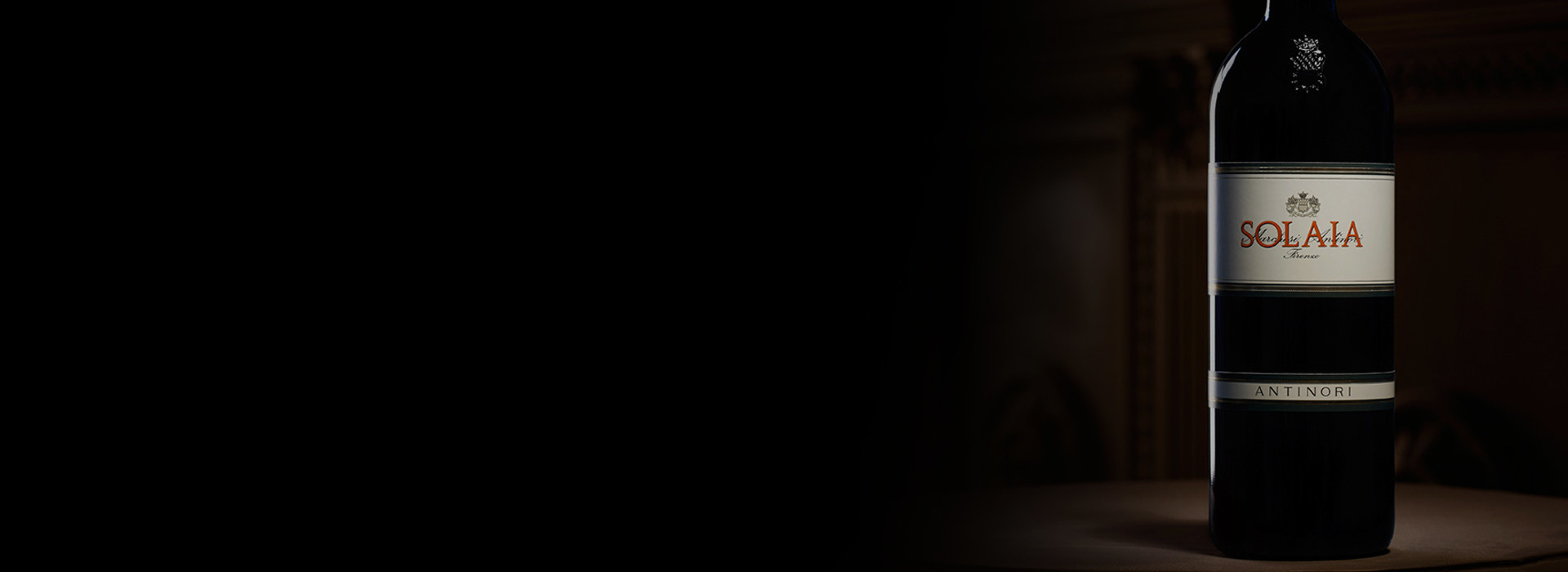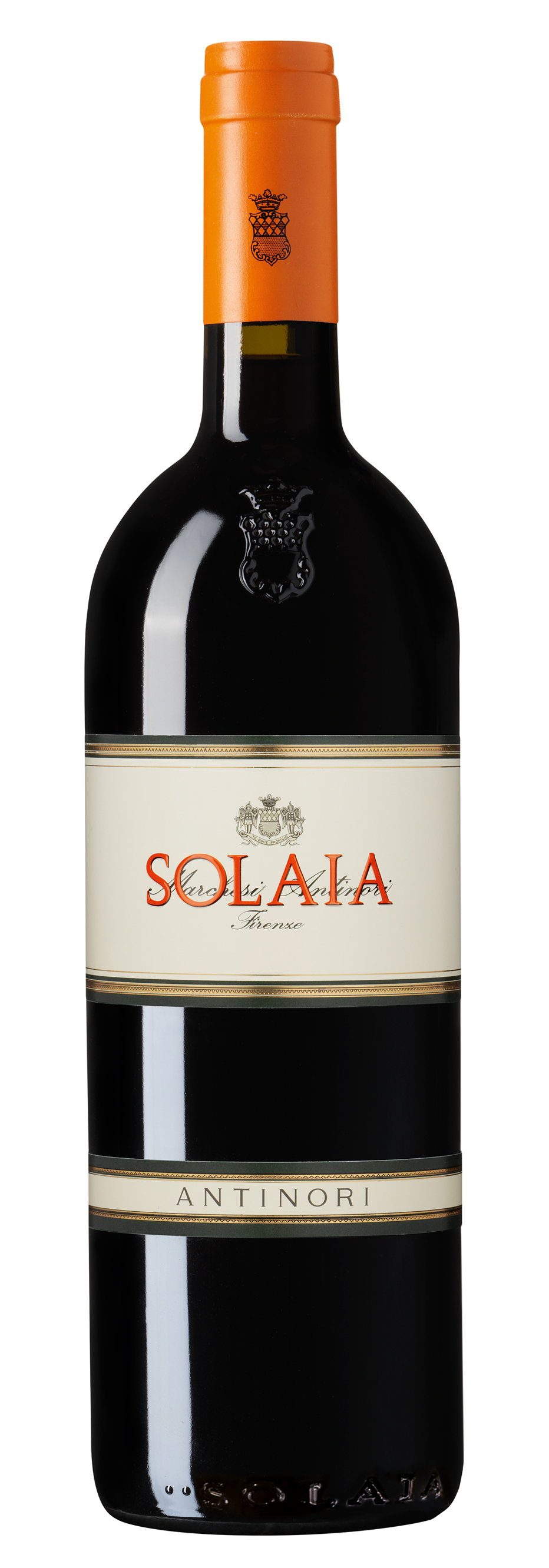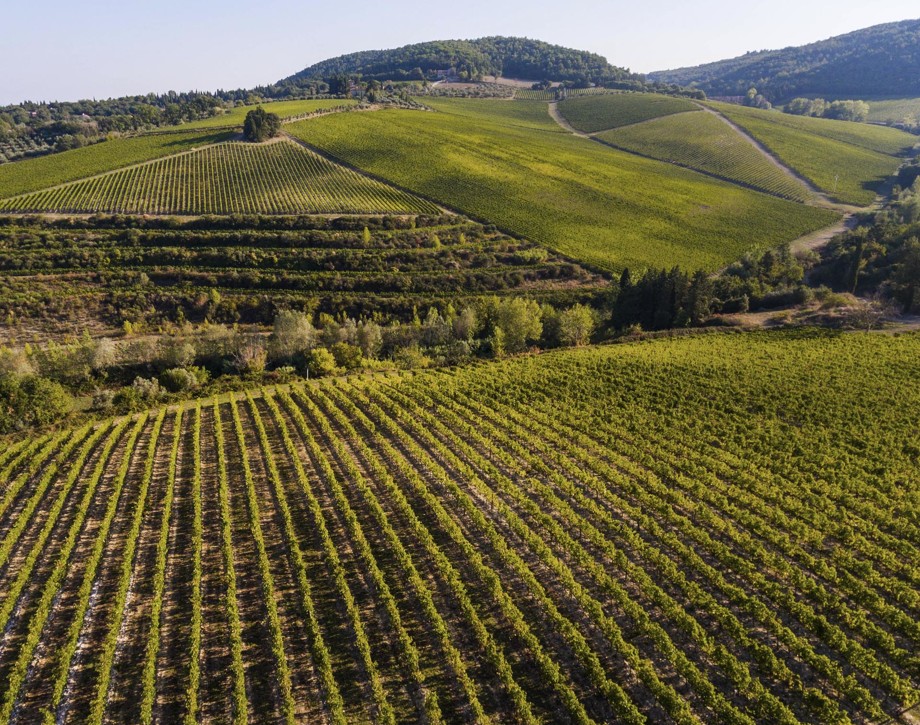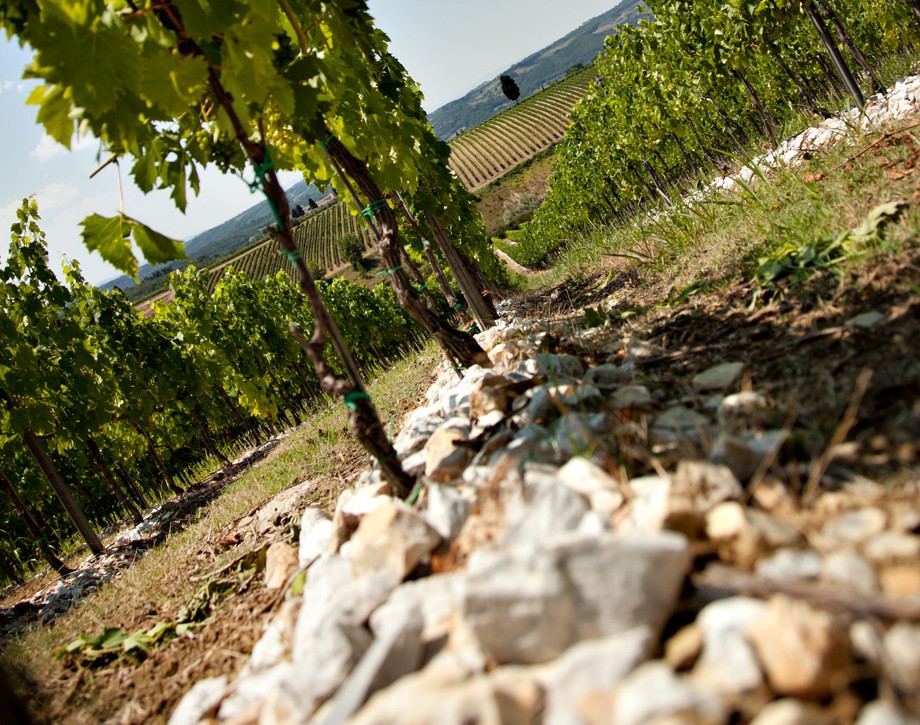Solaia

Climate
The 2019 growing season in Chianti Classico was defined by normal climatic conditions. Winter was rather cold with limited rainfall and the first half of spring was cool and rainy especially during the months of April and May. Summer weather was hot, uninterrupted by major heat spikes, with slightly higher than average precipitation levels ensuring a normal growth cycle of both the vines and grape clusters. Ideal climatic conditions set in at the end of August and continued throughout September and October allowing the three grape varieties grown in the Solaia vineyard to reach perfect ripeness. Harvesting activities began at the end of September, starting with Cabernet Franc and Sangiovese and were completed on October 14th with Cabernet Sauvignon. Total Annual Rainfall: 1005.8 mm Average Temperature April 1st – October 14th: 19.7 °C Rainfall April 1st – October 16th: 452 mm
Vinification
The utmost care and attention were given both in the vineyards during harvesting operations and in the cellar. Grapes were destemmed, meticulously selected on sorting tables, delicately crushed then transferred by gravity flow into vats. It was imperative that only the finest berries reached the 60 Hl truncated cone shaped fermentation tanks. During fermentation and maceration on the skins, it was essential to maintain the right balance between fruity compounds and quality of the tannins to best express the sweetness, fragrance, identity, and character of Solaia. Immediately after racking, malolactic fermentation began in barriques, enhancing the complexity and pleasantness of the wine. Aging took place in new French oak barrels for approximately 18 months. The various lots were aged separately then blended and reintroduced into barrels to complete the aging process.
Historical Data
Solaia is a 50 acre (20 hectare) vineyard with a southwestern exposure located at an altitude between 1150 and 1325 feet (350-400 meters) above sea level and with a stony soil of “alberese” (hard limestone) and “galestro” (flaky calcareous clay) rock. The vineyard is located at the Tignanello estate. The Antinori family produced this wine for the first time in the year 1978, and the initial blend was 80% Cabernet Sauvignon, and 20% Cabernet Franc, a formula repeated in 1979 as well. In the following years, 20% of Sangiovese was introduced and certain adjustments were also made in the rapport between Cabernet Sauvignon and Cabernet Franc until the current blend was settled upon. Solaia is produced only in exceptional vintage, and was not produced in 1980, 1981, 1983, 1984, and 1992.
Tasting notes
Solaia 2019 is a deep ruby red color. Impressive on the nose for its aromatic complexity and finesse: notes of small red fruit, especially raspberries and mulberries, lead over to sweet sensations of ripe apricots and red oranges together with light floral hints of roses. Distinct aromas of coffee beans, chocolate and licorice are perfectly integrated and are accompanied by fresh impressions of mint and white pepper that give its generous bouquet a pleasant delicate spicy note. The palate is enveloping, harmonious with an excellent and well-balanced structure. Plush, vibrant tannins contribute to its dense, captivating palate. The finish is exceptionally long and pleasurable with a persistent aftertaste that echoes toasted, and spicy notes perceived on the nose.

The Wine
The sunniest part of the Tignanello's hillside is home to the Solaia vineyard. The very best grapes from the very best vineyard. All the rest is passion, the utmost care and research. These are the secrets of Solaia together with the finest Cabernet Sauvignon, Cabernet Franc and Sangiovese grapes from its namesake vineyard.

Climate
The 2019 growing season in Chianti Classico was defined by normal climatic conditions. Winter was rather cold with limited rainfall and the first half of spring was cool and rainy especially during the months of April and May. Summer weather was hot, uninterrupted by major heat spikes, with slightly higher than average precipitation levels ensuring a normal growth cycle of both the vines and grape clusters. Ideal climatic conditions set in at the end of August and continued throughout September and October allowing the three grape varieties grown in the Solaia vineyard to reach perfect ripeness. Harvesting activities began at the end of September, starting with Cabernet Franc and Sangiovese and were completed on October 14th with Cabernet Sauvignon. Total Annual Rainfall: 1005.8 mm Average Temperature April 1st – October 14th: 19.7 °C Rainfall April 1st – October 16th: 452 mm
Vinification
The utmost care and attention were given both in the vineyards during harvesting operations and in the cellar. Grapes were destemmed, meticulously selected on sorting tables, delicately crushed then transferred by gravity flow into vats. It was imperative that only the finest berries reached the 60 Hl truncated cone shaped fermentation tanks. During fermentation and maceration on the skins, it was essential to maintain the right balance between fruity compounds and quality of the tannins to best express the sweetness, fragrance, identity, and character of Solaia. Immediately after racking, malolactic fermentation began in barriques, enhancing the complexity and pleasantness of the wine. Aging took place in new French oak barrels for approximately 18 months. The various lots were aged separately then blended and reintroduced into barrels to complete the aging process.
Historical Data
Solaia is a 50 acre (20 hectare) vineyard with a southwestern exposure located at an altitude between 1150 and 1325 feet (350-400 meters) above sea level and with a stony soil of “alberese” (hard limestone) and “galestro” (flaky calcareous clay) rock. The vineyard is located at the Tignanello estate. The Antinori family produced this wine for the first time in the year 1978, and the initial blend was 80% Cabernet Sauvignon, and 20% Cabernet Franc, a formula repeated in 1979 as well. In the following years, 20% of Sangiovese was introduced and certain adjustments were also made in the rapport between Cabernet Sauvignon and Cabernet Franc until the current blend was settled upon. Solaia is produced only in exceptional vintage, and was not produced in 1980, 1981, 1983, 1984, and 1992.
Tasting notes
Solaia 2019 is a deep ruby red color. Impressive on the nose for its aromatic complexity and finesse: notes of small red fruit, especially raspberries and mulberries, lead over to sweet sensations of ripe apricots and red oranges together with light floral hints of roses. Distinct aromas of coffee beans, chocolate and licorice are perfectly integrated and are accompanied by fresh impressions of mint and white pepper that give its generous bouquet a pleasant delicate spicy note. The palate is enveloping, harmonious with an excellent and well-balanced structure. Plush, vibrant tannins contribute to its dense, captivating palate. The finish is exceptionally long and pleasurable with a persistent aftertaste that echoes toasted, and spicy notes perceived on the nose.

Tenuta Tignanello
The Tenuta Tignanello estate is in the heart of Chianti Classico, in the gently rolling hillsides between the Greve and Pesa river valleys. It extends over an area of 319 hectares (788 acres), of which 165 (407 acres) are dedicated to vines. Two of the estate’s prized vineyards are on the same hillside, Tignanello and Solaia, on soils that originated from marine marlstone from the Pliocene period rich in limestone and schist. The vines enjoy hot temperatures during the day and cooler evenings throughout the growing season. The estate’s two signature wines, Solaia and Tignanello, are produced from these vineyards and have been defined by the international press as “among the most influential wines in the history of Italian viticulture”. According to Marchesi Antinori, Solaia and Tignanello are an ongoing challenge and a never-ending passion. The Tignanello estate has vineyards of indigenous Sangiovese grapes as well as some other untraditional varieties such as Cabernet Franc.

Soil
Soils originating in the Pliocene period, rich in marine fossils with veins of clay. Rich presence of calcareous rocks and marl.


















